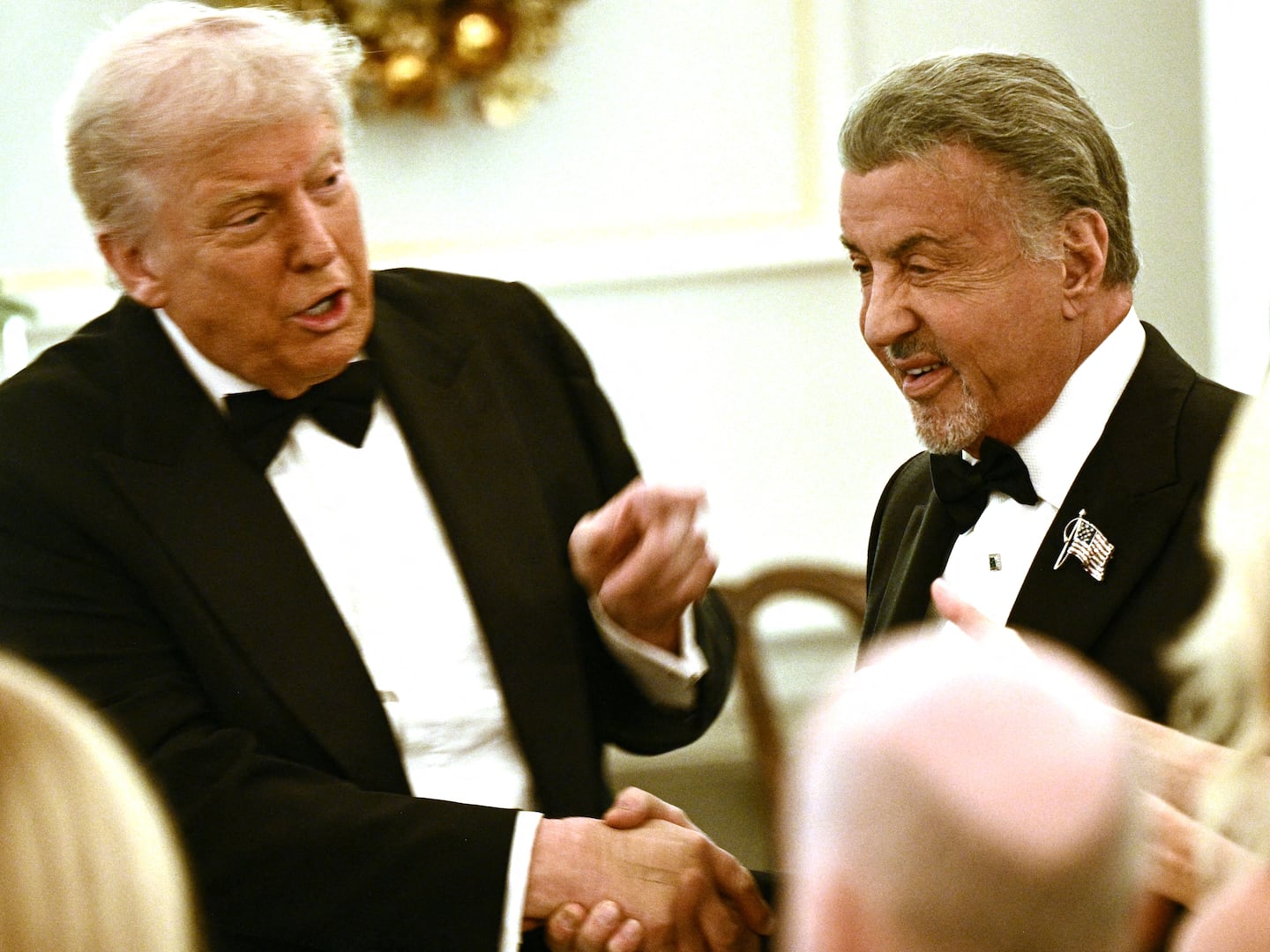Maybe now the madness can end. Osama bin Laden sleeps with the fishes. Anwar al-Awlaki is in bits and pieces. Ding, dong, the sons of bitches are dead. But such is the power of terrorism in the mind of America that the collective neurosis about Muslim bad guys continues to this day and, indeed, could get worse.
The purveyors of paranoia among those who pass for politicians in the United States would have us believe that even as the external threat from al Qaeda terrorists is being blown away, the danger inside America is growing. They love to talk about a vast conspiracy that could actually impose Islamic law, or Sharia, in the 50 states. And more than a dozen state legislatures have actually wasted time and effort on that utterly specious notion.
What the record shows, in fact, is that such fantasies by the far right are based on the fantasies of would-be jihadists in online propaganda that Brian Michael Jenkins, for decades the Rand Corporation’s leading authority on terrorism, likens to pornography: the excitement comes from looking and dreaming, not doing.

The New Mexico–born Awlaki, 40, and Samir Khan, the webzine editor from North Carolina who got a fatal taste of Hellfire along with him in Yemen on Friday, supposedly epitomize the alleged Islamist menace to America. Awlaki’s mellifluous English-language diatribes and the slick online publication Inspire, edited by the 25-year-old Khan in vernacular American (“Build a Bomb in the Kitchen of Your Mom”), were “linked” in countless press reports to a statistical upsurge in near-miss terrorist attacks inside the United States over the last couple of years.
But you’ll note that when President Obama talked about the killings, he barely touched that theme. Americans and their Yemeni allies snuffed Awlaki because he was, Obama said, the head of “external operations” for Al Qaeda in the Arabian Peninsula. (“External,” in this case, probably means outside Saudi Arabia—the group’s main target—as well as outside Yemen, where it is based.)
Awlaki, as Obama noted, played a key role plotting the failed attempt by a Nigerian “underwear bomber” to bring down an American airliner flying from Amsterdam to Detroit on Christmas Day 2009, as well as the thwarted effort to blow up American cargo planes with parcel bombs dispatched from Yemen in 2010. And Awlaki “repeatedly called on individuals in the United States and around the globe to kill innocent men, women, and children to advance a murderous agenda.” But that’s as far as Obama went to link him to plots inside the U.S.
The reason is simple: Awlaki, with the help of Khan, put out the call for murder and mayhem by other Americans—and almost no one answered. Jenkins lays out the facts brilliantly and succinctly in his eye-opening monograph for Rand, “Stray Dogs and Virtual Armies: Radicalization and Recruitment to Jihadist Terrorism in the United States Since 9/11.”
Jenkins crunches the numbers and parses the court records on the 32 alleged jihadist plots cooked up in America between Sept. 11, 2001, and January 2011. Of those, “only 10 developed into anything resembling an operational plan,” and—take note—six of them were FBI sting operations in which the feds offered the (fake) explosives and to some extent provided the provocation to test the would-be terrorists’ willingness to move from fantasy to action. (There was another case developed along those lines just last week.)
In only two instances did plotters actually try to build their own bombs. Both of them had actually managed to train in Pakistan with al Qaeda or its allies. But even so, New Yorker Najibullah Zazi kept forgetting the exact recipe for the kitchen-concocted explosives, kept calling his contacts in Pakistan for advice, got intercepted, got arrested, and never got the chance to blow himself up on the New York City subway. Faisal Shahzad in Connecticut thought he could cook up enough explosives to wreak havoc in Times Square using materials so commonplace he wouldn’t tip off the feds or the NYPD. And it’s true, he operated beneath the counterterror radar until he parked his vehicle-borne improvised explosive device in the middle of the Big Apple; but it’s also true the bomb failed to detonate.
The only incidents in which “homegrown” jihadists actually killed people were attacks by individual guys with guns: Maj. Nidal Hasan, who murdered 13 fellow soldiers at Fort Hood, Texas, in November 2009, and Carlos Bledsoe, who murdered one person in Arkansas a few months earlier. Hasan had emailed Awlaki. Bledsoe, a convert, had spent time in Yemen. Ergo, Awlaki was behind this supposed new wave of homegrown terror using what a lot of the press, especially the paranoid fringes, likes to call “lone wolves.”
Jenkins prefers to call them “stray dogs,” and in a marvelous riff explaining why that’s a better term, he profiles your typical terrorist wannabe: “estranged but dependent on society, streetwise but lacking social skills, barking defiantly, and potentially dangerous, but at the same time, suspicious, fearful, skittish. On their own, few of America’s jihadists move in a straight line toward action. They wander about in the shade of the jihadist ideology, sniffing at the edges of violence before making a move. Most are arrested before they get that far.”
In fact, at the level of Hasan and Bledsoe it gets difficult to separate a couple of individual acts from the kind of violence that is all too endemic in American society at large. Again, consider the numbers: those two fatal attacks by Hasan and Bledsoe killed a total of 14 people. But 73 people were killed in hate crimes in the United States between 2001 and the end of 2010, notes Jenkins, “to say nothing of the sadly not uncommon cases of mentally disturbed shooters gunning down people in murderous rampages.” Lunatics spraying bullets at schools, colleges, and fast-food joints over the last decade have mowed down so many innocents that it’s hard to keep track. The student shooter at Virginia Tech alone slaughtered 32 people in 2007, more than twice as many as were killed by anyone in the U.S. even remotely connected with al Qaeda after 9/11.
People forget that terrorism started long before al Qaeda, and it's not since the 1960s that the United States has experienced a 10-year run without a major terrorist attack on an American target abroad or in the United States.Today the greatest danger for Americans, in fact, is not the violence that the Awlakis and the Khans might inspire—the virtual armies that tend to be satisfied by fantasy jihad. It’s the enormous overreaction of American society when incidents do take place, and even when they fail.“Given America’s unrealistic zero tolerance for risk, a hyperactive news media, and politicians primed to point fingers,” writes Jenkins, “even a small scale incident could easily provoke national overreaction.”Terrorism is a mind game. It's not about territory or troops. And we still need to realize that the key to winning that contest is to be confident about our resilience, our strength and our unity. Over the course of the last decade we have shown to the tune of more than a trillion dollars and thousands upon thousands of casualties that we can dish out violence abroad. But I don't think we'll be sure of ourselves until we know for sure that we can take a punch at home without turning on each other.In an email after Awlaki's death, Jenkins told me "the continuing decimation of [al Qaeda's] leaders will cause those still at large to keep their heads down, and that will impede their internal communications. It is disruptive. It also removes talent. And it is a psychological blow." So, "good riddance to al-Awlaki," said Jenkins, "but his removal does not fundamentally alter al Qaeda's operational capabilities."There will be more pornographers of jihad, more Awlakis and Khans. And all but the tiniest fringe of the American Muslim population will resist their propaganda. But as the pious preachers against Islam keep the message of hate alive they only increase the chances that some stray dogs will be moved from the fantasy of violence to the terrible reality.






